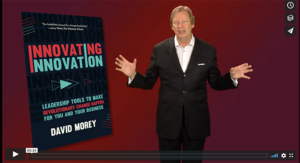30 Sep Create a Culture of Urgency and Soft Landings
Create panic early.
—Richard Branson
 One school headmaster predicted he’d either end up in prison or become a millionaire. He was right and wrong. In 1971, a young Richard Branson was convicted and briefly jailed for tax evasion, but he soon shot right past millionaire to become a billionaire many times over.
One school headmaster predicted he’d either end up in prison or become a millionaire. He was right and wrong. In 1971, a young Richard Branson was convicted and briefly jailed for tax evasion, but he soon shot right past millionaire to become a billionaire many times over.Today, the founder of Virgin Records, Virgin Mobile, Virgin Cola, Virgin Cars, Virgin Media, Virgin Blue, Virgin Trains, Virgin Express, Virgin Nigeria, Virgin America, Virgin Holidays, Virgin Vacations, Virgin Hotels, Virgin Voyages, Virgin Limited Edition, Virgin Megastores, Virgin Money, Virgin Atlantic, Virgin Galactic, Virgin Fuels, Virgin Comics, Virgin Health Bank, Virgin Radio Italia, Virgin Healthcare, Virgin Racing, Virgin Sports, Virgin Orbit, Virgin Startup, Virgin Care, and the Virgin Earth Challenge, Sir Richard Branson, personifies the power of using urgency to drive innovation.
“Create a sense of urgency,” Branson offers, “not complacency.”
Branson’s history of business innovation is unprecedented. The founder of 135 companies that have gone bankrupt, he quickly reminds us that “40 are doing well.” His philosophy—and the focus of this chapter— is summed up in a simple imperative sentence followed by a compound question: “Let’s give it a go. What’s the downside and how can we protect it?”
Branson is restless by nature and design, sometimes channeling this restlessness outside the business world. He has, for example, moved from challenge to challenge, physical to engineering, speed to endurance. He boated to a world record for crossing the Atlantic, and then he tried to cross it in a balloon—training in preparation for three years: skydiving, water survival, and, yes, ballooning.
In July 1987, Branson began pushing even harder—building the largest balloon ever made—as tall as a 21-story building—and using it to ride a jet stream at a never-before-attempted wind speed of 200 miles per hour. Later, he’d try to be the first to cross the Pacific in a hot-air balloon. Four times he tried to bring Jules Verne to reality, by attempting to circumnavigate the globe in a balloon. Once he set a world record for the fastest crossing of the English Channel in an amphibious vehicle1
But let’s go back to that July morning of 1987. Branson is in real trouble. He’s brought along a co-pilot, Per Lindstrand, an experienced balloonist—probably to make up for the simple fact that he himself has barely flown a hot-air balloon before.
The adventure started out flawlessly. Sailing through the air nearly 3,000 miles over a day and a half, Branson and Lindstrand are now well on their way. Then, suddenly, the winds of luck shift. As they begin to attempt to land, trouble hits in multiples. First, the ejection capsule that is supposed to get them safely to earth fails, forcing them to fly out and over the Irish Sea. Several times, their balloon dips into the icy chop of the Irish water, bouncing up to sixty feet above the waves. The experienced Lindstrand’s advice is unsubtle: Jump!
He does. But no sooner does he jump than the balloon, bearing Branson, rockets upward to a spine-chilling 12,000 feet. The multi- billionaire can do no more than stare at the ever-retreating sea.
I am dead, he thinks. Briefly he debates skydiving out of the capsule—but, based on a prior near-death training incident, he decides to play it safe.
“I climbed back into the capsule and just desperately tried to make sure that I was making the right decision,” Branson remembers in a TED interview.
All he can do now, 12,000 feet above the Irish Sea, is to recall, recover, and channel the ways he has before surfed hundreds of business crises. Calming and steading himself, he realizes that above him is a balloon that in some ways is like a large parachute, and so, wishful thinking or not, he convinces himself the best bet is to steer it down anyway he can through the clouds—willing it, slowly and uncertainly, guiding it back down to the water. As it hovers 50 feet above the Irish Sea, he jumps.
Rescued from the chilling waters, Branson swears off ballooning—for a full two hours, before beginning to plan something even more daring.

Sorry, the comment form is closed at this time.